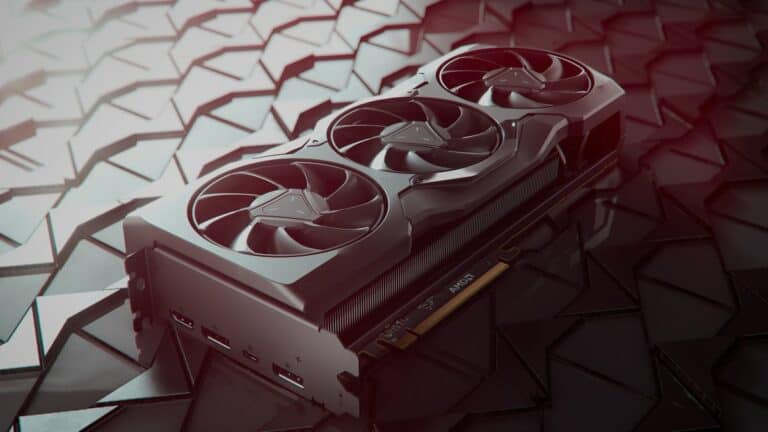AMD will launch the AMD Radeon RX 7000 series GPUs by the end of this year. The series features RDNA 3 technology that supports smaller chipsets instead of a single chip. Performance improves as a result.
The AMD Radeon RX 7000 GPUs consist of two variants: the Radeon RX 7900 XT and the top-of-the-line Radeon RX 7900 XTX.
Compared to the latest generation of gaming GPUs, the RX 7900 XT achieves up to 1.5 times more performance, while the RX 7900 XTX improves speeds by a factor of 1.7. The performance of the RX 7900 XTX can reach up to 61 teraflops, according to AMD.

RDNA 3 technology
The main feature of the new GPUs is RDNA 3 technology, which allows the GPUs to be based on several chip sets instead of a single, fixed processor. The chiplets allow processor tasks like rendering, AI and ray tracing to be handled separately, which should improve performance.
The GPUs are based on AMD’s Navi 31 processor. Up to 7 chiplets are grouped on a single processor. The largest chiplet is dubbed Graphics Compute and contains all stream processors.
The remaining chiplets are dubbed Memory Cache Dies. These chiplets include the Infinity Cache and a 64-bit memory controller for the GDDR6 memory onboard. Memory capacity goes up to 20GB for the AMD Radeon 7900 XT GPU and 24GB for the 7900 XTX GPU.
To further increase performance, the clock speeds of the shaders and front-end are decoupled from each other, AMD indicates.
Price tags
Other enhancements include improved Display Port functionality, better video encoding capabilities and several software updates. AMD Radeon RX 7000 GPUs don’t come cheap. The 7900 XT is priced at $899, while the 7900 XTX starts at around $1.000.
